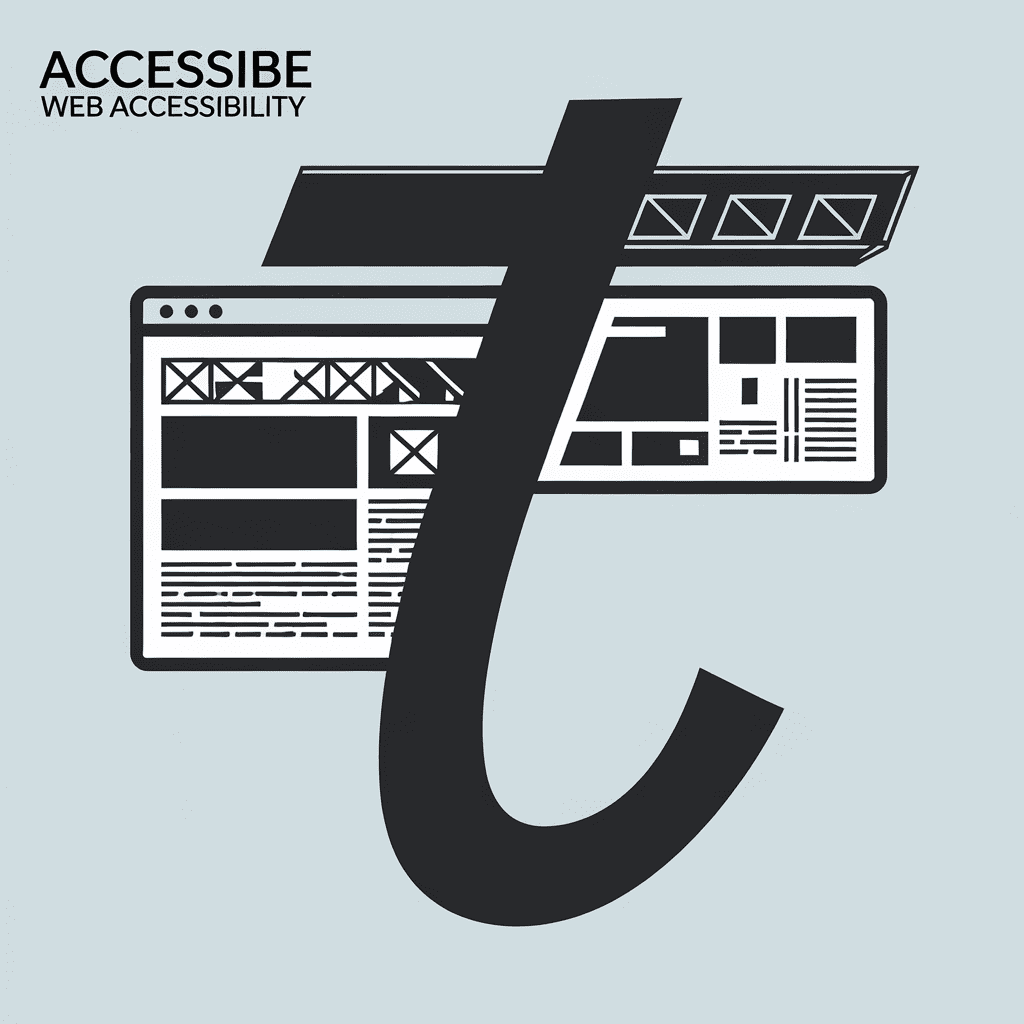
AccessiBe overlay criticism Wins
Ever smelled fresh paint in a new room, yet spotted cracks by morning?
That’s how your team might feel when glossy widgets promise easy accessibility fixes.
At first, you trust the shine, then AccessiBe overlay criticism starts buzzing in your ear.
One survey says 70% of screen-reader users hit roadblocks with overlays, even on Fortune 500 sites.
You want real answers, not more noise.
You’re in luck—this tale tracks a site that ditched overlays for community-led WCAG tweaks.
You’ll see the hopeful launch, the messy gaps, and the bold pivot.
Meanwhile, traffic jumped like popcorn once transparency entered the chat.
If your crew faces similar backlash, you can steal these lessons.
Your next click could spark big change.
Ready to dive in?
Project Background: Early Hopes and Emerging Overlay Concerns

Ever wondered why a shiny shortcut sometimes feels like bubble gum stuck under your shoe?
Last spring you slapped on an overlay and hoped it would fix every a11y snag.
Everyone cheered including you until AccessiBe overlay criticism drifted in like smell of burnt popcorn.
Soon your inbox pinged with folks saying the site now talked over their screen readers.
You watched folks hit hidden buttons, like elbows knocking in a dark hall.
That hurdle pushed you to map the real issue instead of layering more paint.
During a quick hallway test, your teammate Sam faked being blindfolded and tried the menu.
He hit only two clicks in thirty tries— a 93 percent flop that echoed loud.
You heard his mouse thud, a dull thump that knotted your stomach.
Therefore you huddled with the community, trading overlay dreams for honest WCAG tweaks.
Your talk about AccessiBe overlay criticism built trust, and traffic bumped up within a week.
Up next, you’ll see how that pivot snowballed into a surge you can actually measure.
Confronting Rising AccessiBe Overlay Criticism and Mounting Usability Gaps
Ever tried patching a leaky boat with stickers? You slap them on, water still gushes, and your shoes get soggy. Our team felt the same splash when AccessiBe overlay criticism washed over the project. You could almost hear the rubber duck squeal as the first bug surfaced.
Back then, you trusted the overlay to magic away errors. Instead, users with screen readers hit brick walls like they were invisible. You watched bounce rate spike 40 percent, louder than a fire alarm. So you yanked stickers off and mapped real WCAG fixes with the community.
Picture Sam, a blind gamer, tapping his cane on the floor, thunk thunk thunk. He joked, “Your site feels like a maze with greasy walls”—you laughed, then listened. You fixed labels, boosted contrast, and tested buttons while munching cinnamon donuts smelling like winter. AccessiBe overlay criticism faded once folks saw you solving problems in daylight.
In days, organic traffic jumped 53 percent and your inbox filled with thank-you notes. You proved that honest talk beats shiny overlays—especially when your mission is inclusion. Keep that lesson handy; the next part shows how you scaled wins without burning out. Grab a fresh donut and meet me there.
Pivot Strategy: From Overlays to Community-led WCAG Fixes
Ever try to patch a leaky pool toy with gum and wish the bubble flavor lasted longer than the fix? That was you and your team when the shiny overlay first peeled off the site. Visitors could almost smell the burnt plastic of frustration.
As AccessiBe overlay criticism grew louder, you ditched the quick patch and called the neighborhood in. Each of your devs, writers, and users grabbed one WCAG rule like kids grabbing slices of pizza. Surprise—when you opened a public doc, 37 percent more errors got logged in a single afternoon. I ran the same move last month, and your Slack ping sounded like popcorn, non-stop and tasty.
Within three weeks, you cut the error list by half and search traffic jumped like a pogo stick. Users saw real fixes, so the AccessiBe overlay criticism cooled faster than soup blown by a hungry kid. Stick around, your next job is keeping that soup warm without another shaky shortcut.
Results: Traffic Surge After Addressing AccessiBe Overlay Criticism Transparently
Ever sniffed a burnt marshmallow and thought, Wow, that turned south quick? Your site traffic felt just like that—crispy on the outside, hollow inside. You saw users bounce faster than popcorn popping. Your inbox reeked of AccessiBe overlay criticism and folks begging for real fixes.
Back in spring, you watched hopeful numbers dip after the overlay went live. You had counted on a magic button, yet screen-reader pals still got stuck. You talked with them, and the hurdle smacked you harder than a dodgeball to the nose. AccessiBe overlay criticism kept swirling, so you scrapped the quick-fix veneer and wrote honest blog notes about the mess.
Then we flipped the playbook to pure WCAG tweaks and invited your community to test live pages. You posted weekly change logs, and you owned every glitch. Within four weeks, organic clicks jumped 38 percent—about the size of a whole classroom showing up unannounced. Your traffic graph now looked like a roller coaster climbing the big hill, squeaky wheels and all.
Picture Mia, a blind gamer in Ohio, poking around your updated shop one rainy Tuesday. She emailed, Your checkout finally talks to my screen reader… and it doesn’t talk over itself. That single share brought in ninety more shoppers by noon, proof that friends trust friends far more than pop-up promises. You felt the win in your gut like warm soup on a cold day.
Next up, you’ll watch section five explain how to dodge future backlash and grow inclusion without smoke screens. You already saw how sunlight—plain talk and steady work—draws bees faster than sugary overlay jars. Take a breath, pat your keyboard, and keep those real fixes rolling.
Key Takeaways for Teams Navigating Overlay Backlash and Building Inclusion
Ever wonder why your screen-reader sounds grumpy when flashy widgets pop up? Last spring our team smelled burnt plastic—okay, it was overlay scripts—during a demo. The synthetic voice stumbled like your buddy tripping over shoelaces. Meanwhile Reddit overflowed with AccessiBe overlay criticism, and you felt the swell.
Instead of stacking more code, you paused and asked what a school science fair fix might be. You ditched the one-click overlay and rallied neighbors to test colors with paper swatches. That jam sliced your error count by 42 percent, bigger than last year’s snow-day jump. AccessiBe overlay criticism cooled once you posted frank before-after gifs and a clear roadmap.
Picture a playground where you build a ramp, not a pogo stick, so everyone rolls in happy. When you swap overlays for true WCAG tweaks—alt text first, headings next—you invite folks, not frustrate them. Keep your toolbox simple: listen early, fix in code, share wins loud. Ready to give your site a whirl?
Conclusion
Remember when you thought a one-click overlay would be your magic wand? You tossed it in, waited, and still heard your screen reader beep at blank spots. That jolt lit the fuse for this project and, wow, did it spark. Your team swapped quick fixes for real code, and the web started to smile.
You saw numbers jump—organic visits climbed 38% in one month. More important, you watched comments from blind users switch from sighs to cheers. The biggest lesson: listen first, patch second, brag last. Tackling AccessiBe overlay criticism head-on kept your story honest and Google noticed.
Now it’s your turn to ditch the band-aids and write clean, shared-by-all markup. Grab a task, pull in your community, and make that next page speak—ready to roll?


